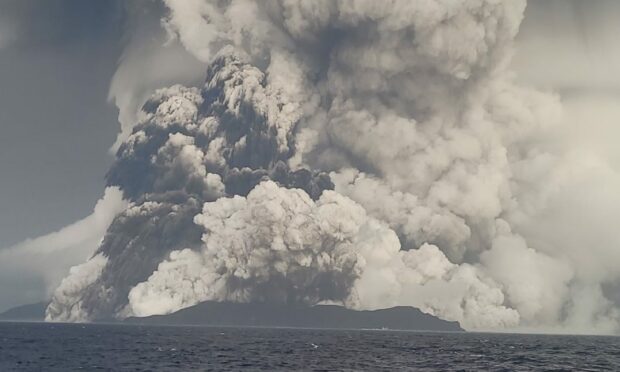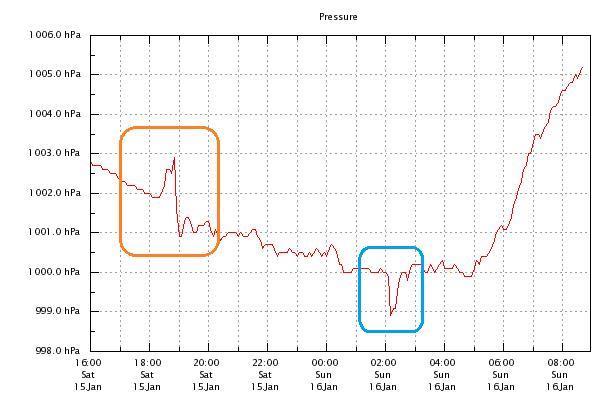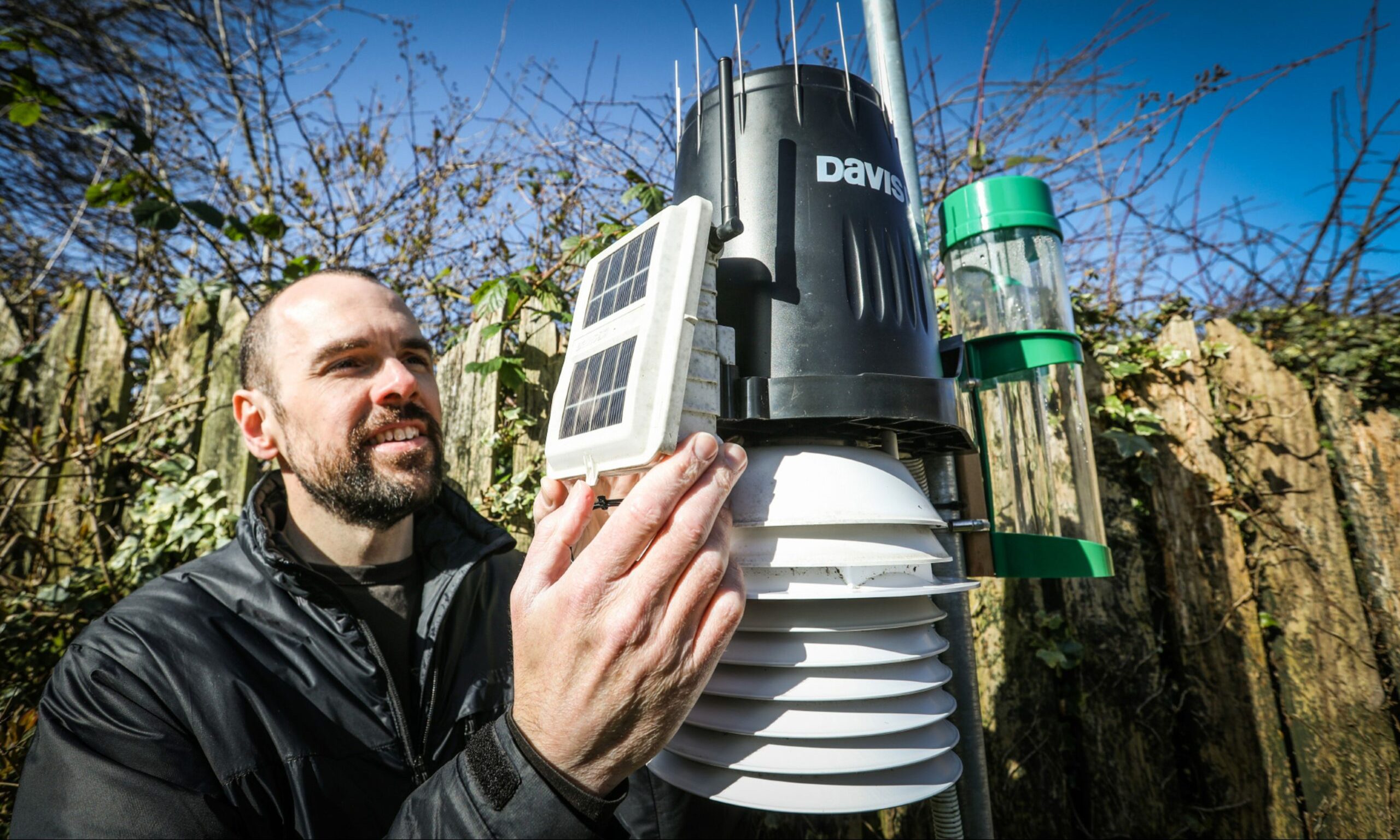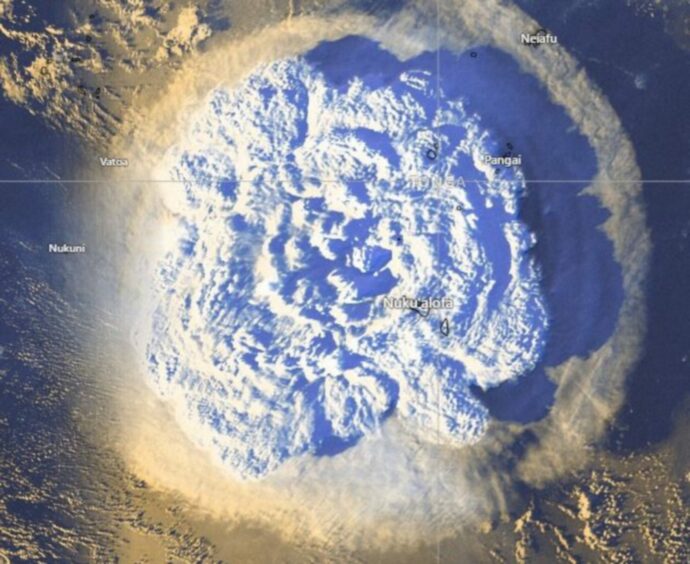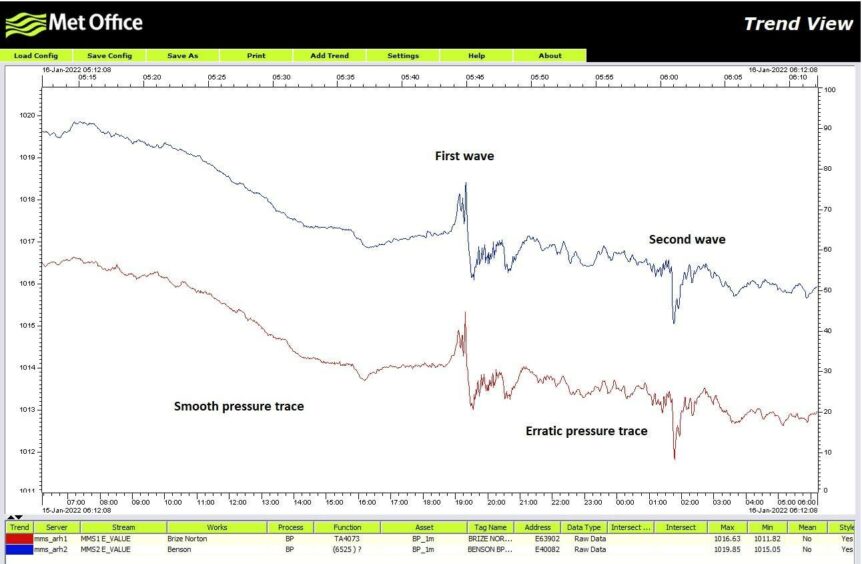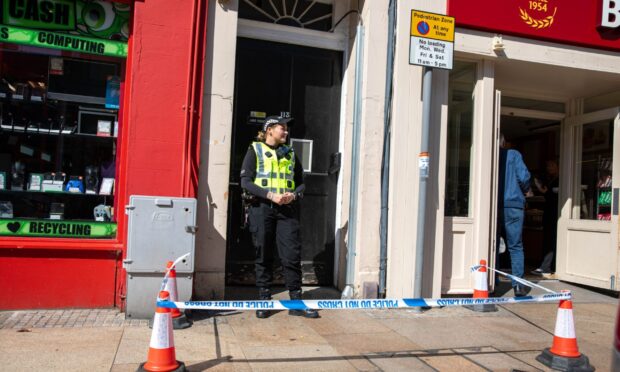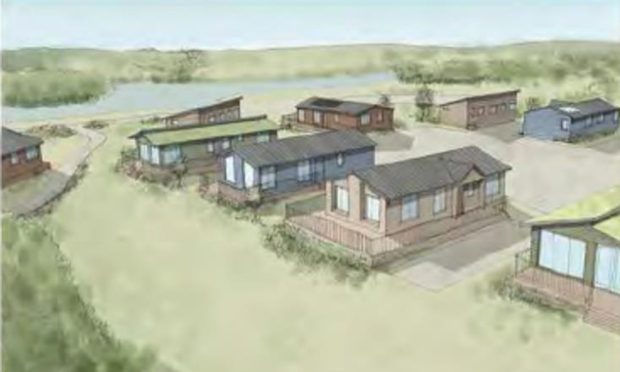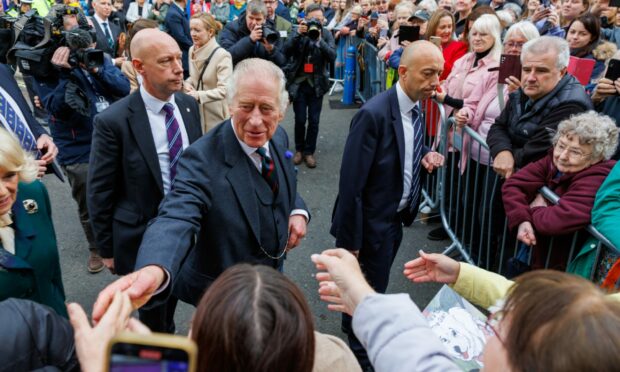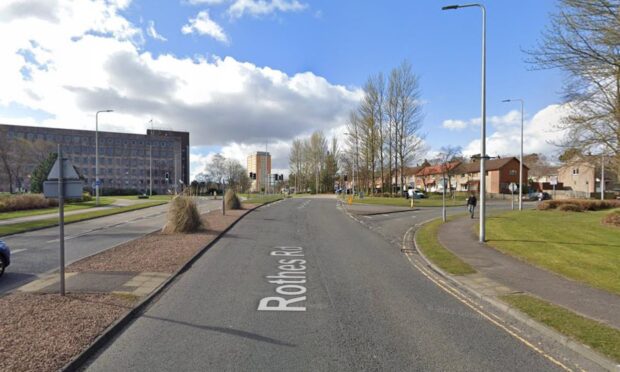Weather stations in Dundee and Fife have captured the moment a shockwave from the underwater volcano eruption in Tonga arrived after travelling nearly 10,000 miles.
The huge eruption of the Hunga Tonga volcano took place on Saturday, triggering tsunami waves that crashed into the Pacific island and sent people fleeing for higher ground.
Satellite images show the island engulfed in a thick ash cloud, making military surveillance flights over the island impossible.
Tsunami waves were also reported in Hawaii, and a sonic boom from the eruption was heard 6,000 miles away in Alaska.
But the eruption was also observed closer to home by Fife-based weather watcher Graham Smith, who runs the Fife Weather website.
Graham captured the moment the eruption arrived in Fife, prompting a small spike in air pressure at around 6pm UK time.
A second spike was recorded in the early hours, around 2am, as the shockwave travelled west in the opposite direction.
Graham, who lives in Lochgelly, said he was surprised when he first realised his equipment had picked up the shockwave.
“I never thought I’d record something like that when I set my weather station up. It’s a timely reminder that we all live on the same planet,” he told The Courier.
Met Office forecaster Simon Partridge said that Scots were unlikely to notice any change in weather patterns as a result of the eruption.
“In the short term, it’s unlikely that this will affect our weather but it’s definitely one to watch in the long term.
He pointed to the 1991 eruption of Mount Pinatubo in the Philippines, which NASA said had led to a measurable cooling of the Earth’s surface for a period of almost two years.
“It’s too early to tell but we could see particulate matter in the atmosphere as a result. After previous volcanic eruptions we’ve seen a slight cooling effect,” he explained.
Tonga itself remains cut off with no official reports of injuries or damage as a result of the tsunami.
New Zealand Prime Minister Jacinda Ardern said the island’s capital Nuku’alofa is covered in thick plumes of volcanic dust.
“Communication with Tonga remains very limited and I know that is causing a huge amount of anxiety for the Tongan community here,” she said.
The US Geological Survey recorded the eruption as equivalent to a magnitude 5.8 earthquake.
In Japan, the government advised locals in coastal areas to evacuate with a local broadcaster reporting waves more than a metre high.
In Fiji, one local, Sanya Ruggiero, said the eruption had caused buildings to shake as many evacuated fearing they could collapse.
“My entire house was shaking. My doors, windows were all rattling like hell. And mine was not even as bad as others. Hundreds of people ran out of their homes,” she said.
Wow! That is amazing! Thanks for sharing the tweet. As you say, David, I also see the peak a bit after 18:00 today for the #Tonga eruption on @dundeeweatherUK @dundeewestend @UoDLifeSciences . The eruption happened at 04:10 GMT I think. 1/2 pic.twitter.com/TUKIu1V5W1
— Geoff Barton 🇪🇺 (@gjbarton) January 15, 2022
And as experts predict ash could contaminate water supplies and cause respiratory illness, Ms Ruggiero said she feared recovery could take several years.
“This is the worst disaster Tonga has had in living memory and the recovery from this is going to take years,” she added.
